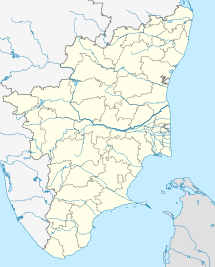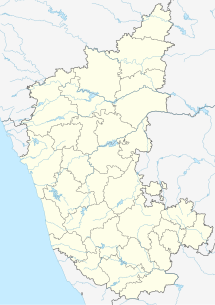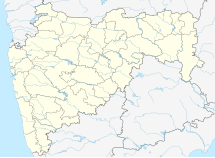User:Marcus334/Tiger reserves in the Western Ghats
The Western Ghats range of hills in southwest India is the southernmost habitat of Bengal tigers. The estimated Western Ghats' tiger population of about 534 (500 to 568) tigers[1] is over 31% of the 1,706 (1,520-1,909) tigers in India. [2]
It is notable that the largest single metapopulation of tigers in the world is within the South Indian states of Karnataka, Tamil Nadu and Kerala. The contiguous protected areas of Wayanad, Nagarahole, Bandipur, Mudumalai, Sigur , Sathyamangalam and Biligiriranga comprises a tiger occupied area of over 11,100 km2 (4,300 sq mi) with 382 (354 to 411) tigers.[3]
Locations
[edit]Five states in the Western Ghats are home to tigers; Tamil Nadu, Kerala,Karnataka, Goa and Maharashtra.
The Western Ghats tiger habitats landscape complex consists of three major landscape units:
- (A) 19.1°-10.8°N latitude
Forested areas from the Ambegaon Hills of Pune District in Maharashtra to Siruvani Hills north of the Palghat Gap, and eastwards up to the Kalrayan Hills in Dharmapuri District in the Eastern Ghats of Tamil Nadu. It has three distinct metapopulations of tigers; (Sharavathi Valley), (Anshi-Dandeli - Kudremukh - Bhadra) and (Nagarahole - Bandipur - Mudumalai - Wayanad) that exist as source populations. This landscape of almost contiguous forest has good potential for the long term survival of tigers due to its large extent of over34,000 km2 (13,000 sq mi).
- (B) 10.3°-8.8°N latitude
Forest areas south of the Palghat Gap to the Nelliampathi Hills and Anamalai Hills up the Palani Hills to Kodaikanal and south to the Cardamom Hills having some connectivity with the Periyar landscape.
- (C) 8.8°-8.3°N latitude
The Periyar-Kalakad-Mundanthurai landscape unit of about 10,000 km2 (3,900 sq mi) till the Shencottah gap.[1]
Population
[edit]The tiger density of five tiger populations was identified within the Western Ghats (south of Goa). These include:
- a) The southern-most population of tigers in Kalakad-Mundanthurai-Periyar complex with a tiger occupancy area of about 3,812 km2 with an estimated population of 38 (36 to 40) tigers.
- b) Parambikulum-Indira Gandhi complex, with tiger occupancy of about 3,253 km2 (1,256 sq mi) and an estimated population of 34 (32 to 36) individuals;
- 3) Nagarahole-Mudumalai-Wayanad complex with tiger occupancy of about 11,100 km2 (4,300 sq mi) and the largest single population in India of 382 (354 to 411) individuals;
- 4) The Kudremukh-Bhadra population having tiger occupancy of about 4,258 km2 (1,644 sq mi) with an estimated tiger population of of 40 (38 to 42) individuals;
- 5) Sharavathi Valley-Anshi-Dandeli complex with tiger occupancy of about 4,756 km2 (1,836 sq mi) with 39 (36 to 42) tigers.
The total for all 5 populations is an area occupied by tigers of 27,179 km2 (10,494 sq mi) with 533 (496 to 571) tigers.[4]
Tiger reserves
[edit]Fifteen of the forty-one Tiger reserves of India are located in the Western Ghats. Total area of these reserves is 8,313.48 km2 (3,209.85 sq mi), 5.2% of the 159,000 km2 (61,000 sq mi) total area of the Western Ghats.[5] and 15.5% of the 53,547 km2 (20,675 sq mi) total tiger reserve area in india.
In addition to these reserves there are other known tiger habitats and tiger corridors which are part of National Parks, Wildlife Sanctuaries or Reserve forests but are not declared as tiger reserves.[6]
Tamil Nadu
[edit]
Among the several Protected areas of Tamil Nadu there are four tiger reserves. These are (numbered from south to north):
The southernmost tiger reserve in India was declared in 1988-89 as the 17th tiger reserve in India with 800 km2 (310 sq mi). It has very good management but low tiger density due to ecological reasons.
Declared in 2008-09 as the 29th tiger reserve in India with 1,019 km2 (393 sq mi). It has very good management with moderate tiger density.
Declared in 2007 as the 36th tiger reserve in India with 321 km2 (124 sq mi). It has very good management and moderate tiger density.
Was declared in 2010 and is soon to be notified. With 524 km2 (202 sq mi), it had 46 tigers in 2010.
Kerala
[edit]Declared in 1978-79 as the 10th tiger reserve in India with 925 km2 (357 sq mi). Management is very good with an estimated 53 tigers in the reserve in 2010.
Declared in 2010 as the 38th tiger reserve in India with 391 km2 (151 sq mi).[7] With very good management, is has moderate tiger density.
Karnataka
[edit]
Declared in 1973-74 as the 1st tiger reserve in India with 866 km2 (334 sq mi). With very good management is has good tiger density.
Declared in 2010 as the 40th tiger reserve in India with 540 km2 (210 sq mi) with 17 tigers in 2005.
Declared in 1999–2000 as the 37th tiger reserve in India with 643 km2 (248 sq mi). With good management is has good tiger density.
Declared in 2011 as the 41st tiger reserve in India with 360 km2 (140 sq mi) it had 20 tigers in 2010.[8]
Declared in 1998-99 as the 24th tiger reserve in India with 492 km2 (190 sq mi). With very good management is has low tiger density.
Declared in 2007 as the 34th tiger reserve in India with 875 km2 (338 sq mi).Dandeli Tiger Reserve With satisfactory management is has low tiger density
Goa
[edit]In June 2011, Jairam Ramesh, Minister of State, MOEF, advised the Chief Minister of Goa, to propose the 208.48 km2 (80.49 sq mi) Mhadei Wildlife Sanctuary as a tiger reserve because of the presence of resident tigers.[9] The reply from Goa is pending.
Maharashtra
[edit]Declared in 2008 39th tiger reserve in India with 569 km2 (220 sq mi). With satisfactory management is had 9 tigers in 2007.[10]
Declared in 2011 with 49 km2 (19 sq mi) but not yet notified.
The other tiger reserves in Maharashtra are not in the Western Ghats.
- Nagzira-Navegaon Tiger Reserve
- Tadoba-Andhari Tiger Reserve
- Pench Tiger Reserve
- Melghat Tiger Reserve
References
[edit]- ^ a b Y.V.Jhala, p.ix
- ^ Y.V.Jhala, p.93
- ^ Y.V.Jhala, Q.Qureshi, R.Gopal, and P.R.Sinha (Eds.) (2011). "Status of the Tigers, Co-predators, and Prey in India" (PDF). 2011: National Tiger Conservation Authority, Govt. of India, New Delhi, and Wildlife Institute of India, Dehradun. p. x. Retrieved 13-3-2012.
{{cite web}}: Check date values in:|accessdate=(help)CS1 maint: location (link) CS1 maint: multiple names: authors list (link) CS1 maint: numeric names: authors list (link) - ^ Y.V.Jhala, p.107
- ^ "'Protected Areas of the Western Ghats". Biodiversity Profile of India (Text Only). Bangalore: ENVironmental Information System [ENVIS], CES, Indian Institute of Science, Sahyadri: Western Ghats Biodiversity Information System. Retrieved 21 June 2007.
- ^
"INDIA TIGER ESTIMATE 2010" (PDF), Public Information Brochure, New Delhi: Ministry of Environment and Forests, GOVERNMENT OF INDIA, p. 9, 3-28-2011, retrieved 6-21-2011
{{citation}}: Check date values in:|accessdate=and|date=(help) - ^ "Parambikulam-Wildlife-sanctuary-to-be-made-Tiger-Reserve", environment/flora-fauna, Time of India
- ^
Ajith Athrady (6-19-2001), "Centre gives nod to Kudremukh tiger reserve", Deccan Herald, New Delhi: The Printers (Mysore) Private Ltd.
{{citation}}: Check date values in:|date=(help) - ^
"Centre asks Goa to propose Mhadei sanctuary as a tiger reserve", Deccan Herald, The Printers (Mysore) Private Ltd, 6-28-2011
{{citation}}: Check date values in:|date=(help) - ^
"'TIGER~MEETR', MEASURING THE MANAGEMENT EFFECTIVENESS OF TIGER RESERVES IN INDIA" (PDF), Public Information Booklet, New Delhi: Ministry of Environment and Forests, GOVERNMENT OF INDIA, p. 7, July, 2011, retrieved 8-9-2011
{{citation}}: Check date values in:|accessdate=and|date=(help)





